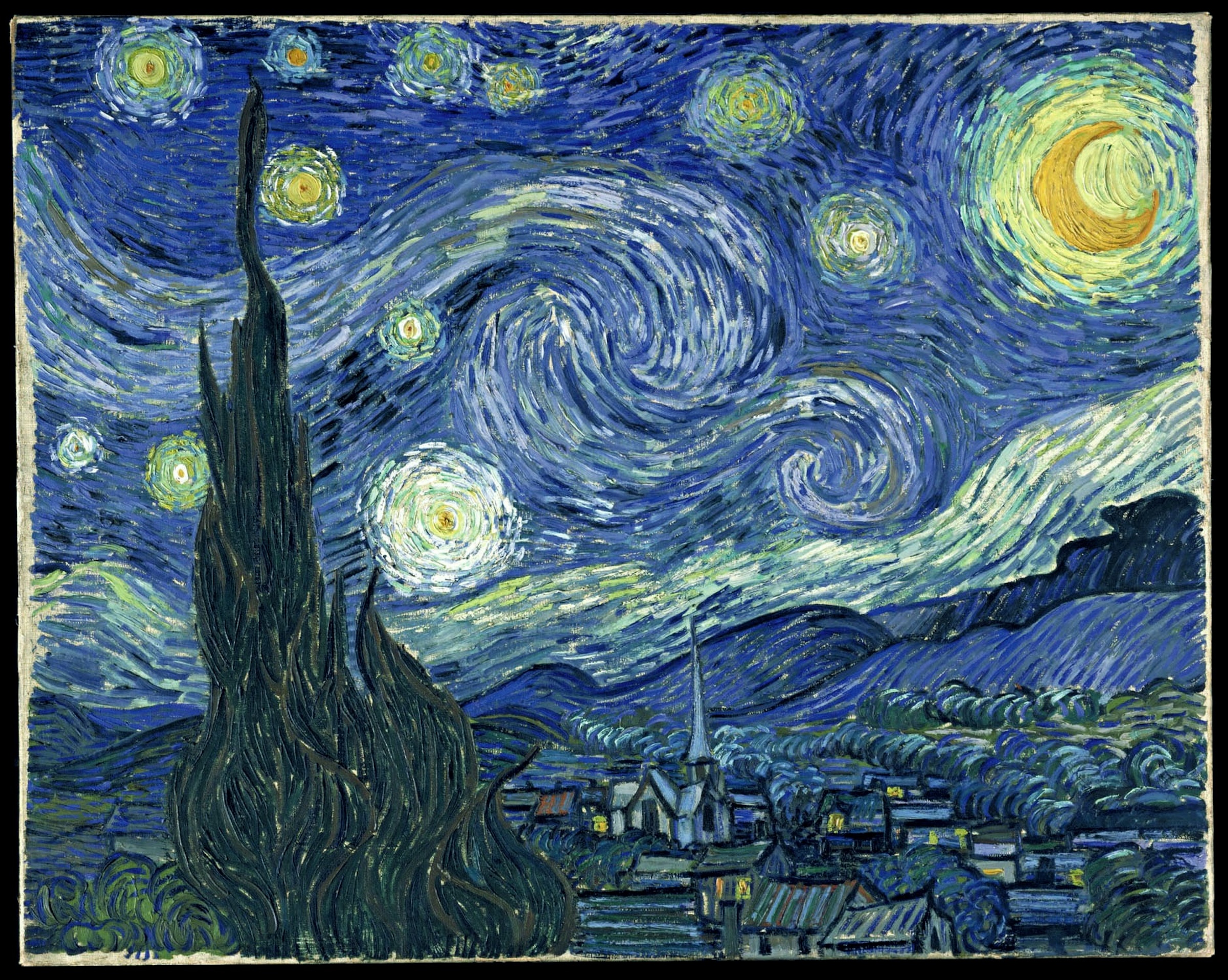Troubled artist or mad scientist? As it turns out, Vincent van Gogh might have been both — a new study reveals that the brushstrokes from his iconic “The Starry Night” (1889) align rather seamlessly with the laws of fluid motion in physics. Last month, fluid dynamics researchers from China and France published a research article in the Physics of Fluids journal indicating that van Gogh’s signature swirls throughout the night sky composition reveal that the artist was innately attuned to hidden atmospheric turbulence.
The research team examined the length of, space between, and varying luminance of van Gogh’s brushstrokes from each of the 14 whirling eddies in “The Starry Night,” and found that the composition intrinsically observes Richardson–Kolmogorov’s cascade picture of turbulence, specifically Kolmogorov’s −5/3 Power Law. Put simply, this predicts that turbulent flows experience energy cascades during which larger eddies transfer some of their energy into smaller ones, and that those, in turn, transfer their energy into even smaller eddies, and so on.

On a microscopic scale, the scientists found that the brushstrokes and the visual effects of the paints’ viscosity also align with Batchelor’s law, which builds off of Kolmogorov’s research with the finding that the distribution of larger eddies to intermediate eddies to even smaller eddies follows an exact ratio. The research team noted that it’s unusual to find both theories at play in a singular atmospheric system.
Van Gogh’s painting predates Kolmogorov’s law by 52 years, and Batchelor’s by 70 years. As astrophysicist Adam Frank told NBC News, the artist was simply capturing “a sense of what mathematicians would later capture in mathematics” in the language of painting.
“Vincent van Gogh, as one of the most notable post-Impressionist painters, had a very careful observation of turbulent flows,” the researchers stated in their conclusion. “He was able to reproduce not only the size of whirls/eddies, but also their relative distance and intensity in his painting.”
Art lovers have long known that van Gogh saw the night sky like nobody else — and now scientists know it, too.

